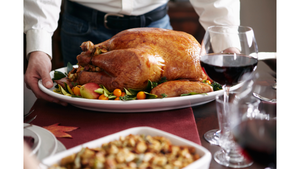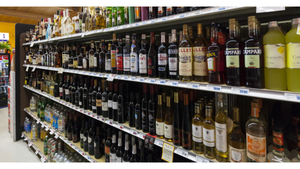THE RETAIL OLYMPICS: ACHIEVING SUPERMARKET GROWTH
You didn't have to tune in to the Salt Lake City action in the past week to experience competition at its most extreme. There were graphic descriptions of the impact of competition on the food-retail playing field during the recent Credit Suisse First Boston Food and Drug Retail Conference held in New York. (Stories on presentations by top retail executives begin on Page 12.)How was the state of the
February 18, 2002
David Orgel
You didn't have to tune in to the Salt Lake City action in the past week to experience competition at its most extreme. There were graphic descriptions of the impact of competition on the food-retail playing field during the recent Credit Suisse First Boston Food and Drug Retail Conference held in New York. (Stories on presentations by top retail executives begin on Page 12.)
How was the state of the supermarket business portrayed at the conference? Fleming's CEO Mark Hansen called the supermarket "a negative-growth format," and said his company has diversified its retail portfolio to incorporate other formats. CSFB analyst Jack Murphy provided a food-retail industry forecast of about "3% underlying sales growth -- effectively no growth." The route to success, said Murphy, is "to be a growth company in a no-growth business."
Sounds like a competition of Olympic proportions.
But there are companies identifying opportunities to expand their businesses. This was evident not only during CSFB, but also at last week's annual convention of the National Grocers Association in Las Vegas. NGA unveiled its new "concept show" that offered an interactive and integrated approach to various supermarket categories. (See the story on Page 6.) Here are growth ideas that emerged from CSFB and NGA:
Build retailer-vendor collaboration. Pathmark is seeking increased supplier collaboration for its ethnic business, and A&P sees an opportunity to build vendor relationships as well, according to presentations at CSFB. A&P noted that improved relationships support sales growth for supply partners and may allow retailers to tap into promotional monies. Analyze private-label penetration. Companies, including A&P and Albertson's, are eyeing opportunities to strengthen their store-label programs. A&P, for example, foresees growing this category's penetration closer to industry averages, taking it to at least 16% sales penetration from its current 12%.
Jump on the next merger wave. Some supermarket chains may grow through mergers with drug store operators. CSFB analyst Murphy forecast: "In the next five years, we should see two or three of the top four drug stores merged with a supermarket operator, either foreign or domestic."
Embrace local marketing. This has become an increasingly important strategy for regional chains and independents. It positions them as the neighborhood markets that are the alternatives to supercenters and other big-box retailers.
Increase options for shoppers. NGA's concept show provided demonstrations of solutions for supermarket merchandising in whole health, specialty foods, fresh foods, center store and other supermarket categories. One of the many examples was an in-store breakfast cart that supports cross selling, not only of traditional morning foods and juices, but also of lunch items that shoppers can grab for later, a strategy that aims at capturing some business from the fast-food sector, noted Stephan Kouzomis of the Meal Market Solutions Group, which designed and developed this concept area.
Capturing growth today is harder because of all the new competitors in the game. But someone has to win the gold, and everyone has a shot. And there's no shame in the silver or bronze, either.
About the Author
You May Also Like




